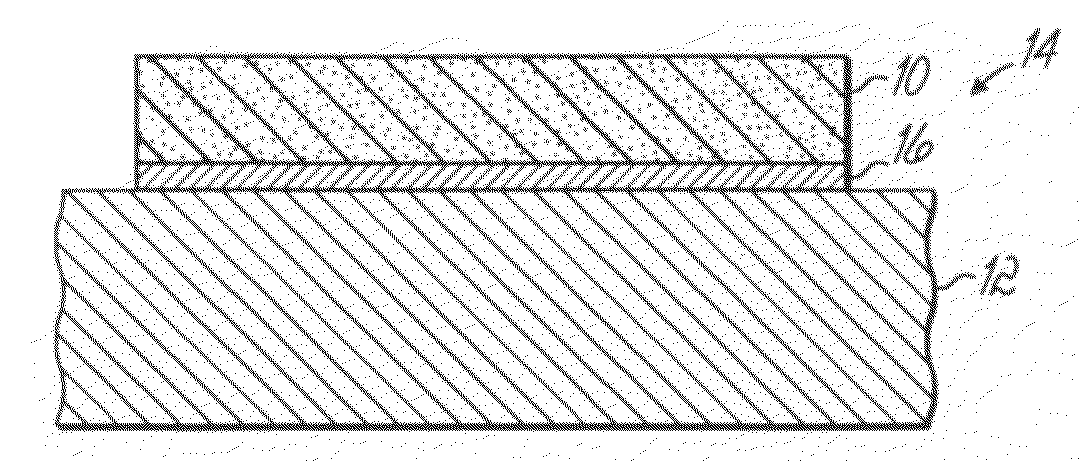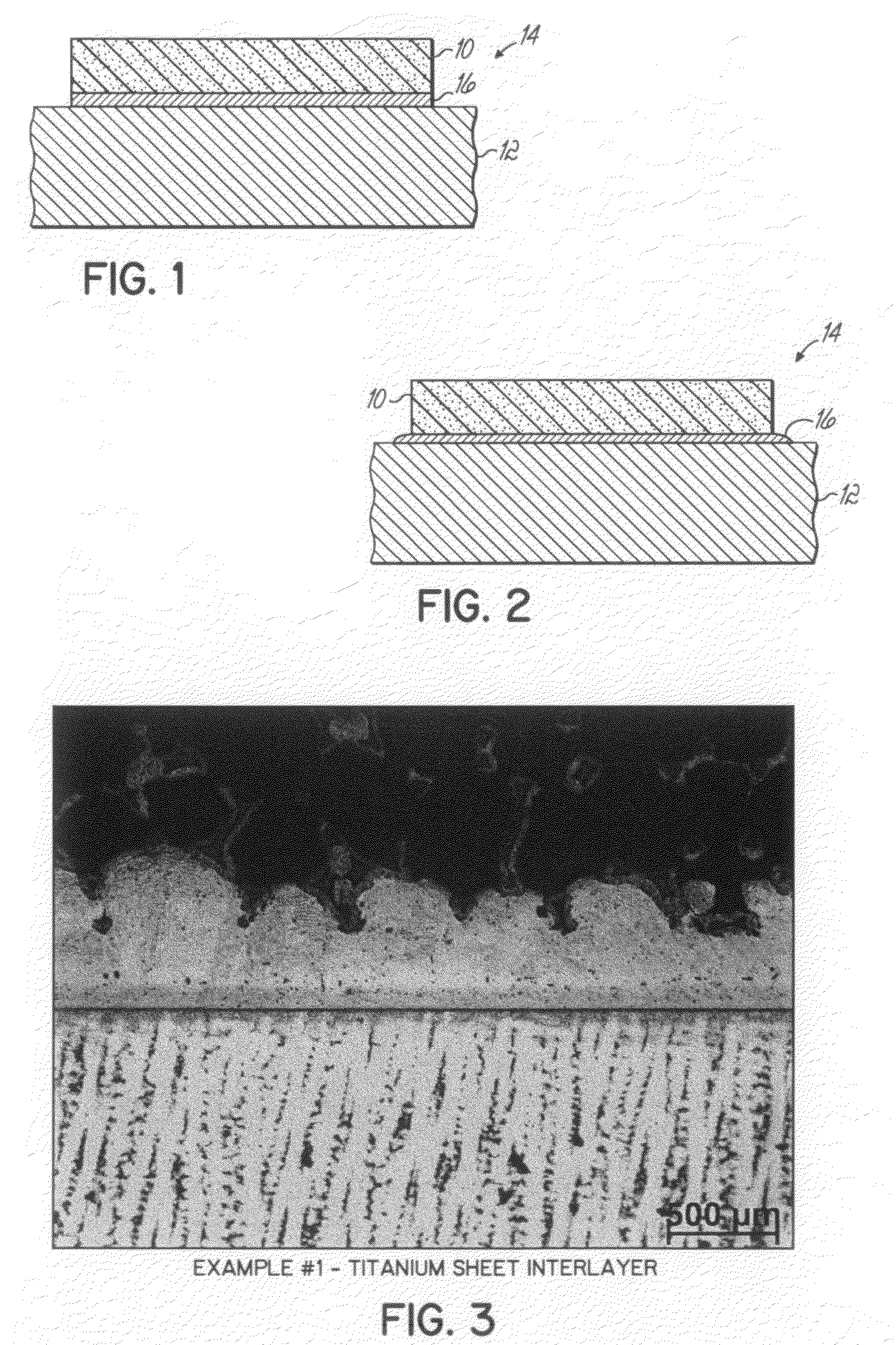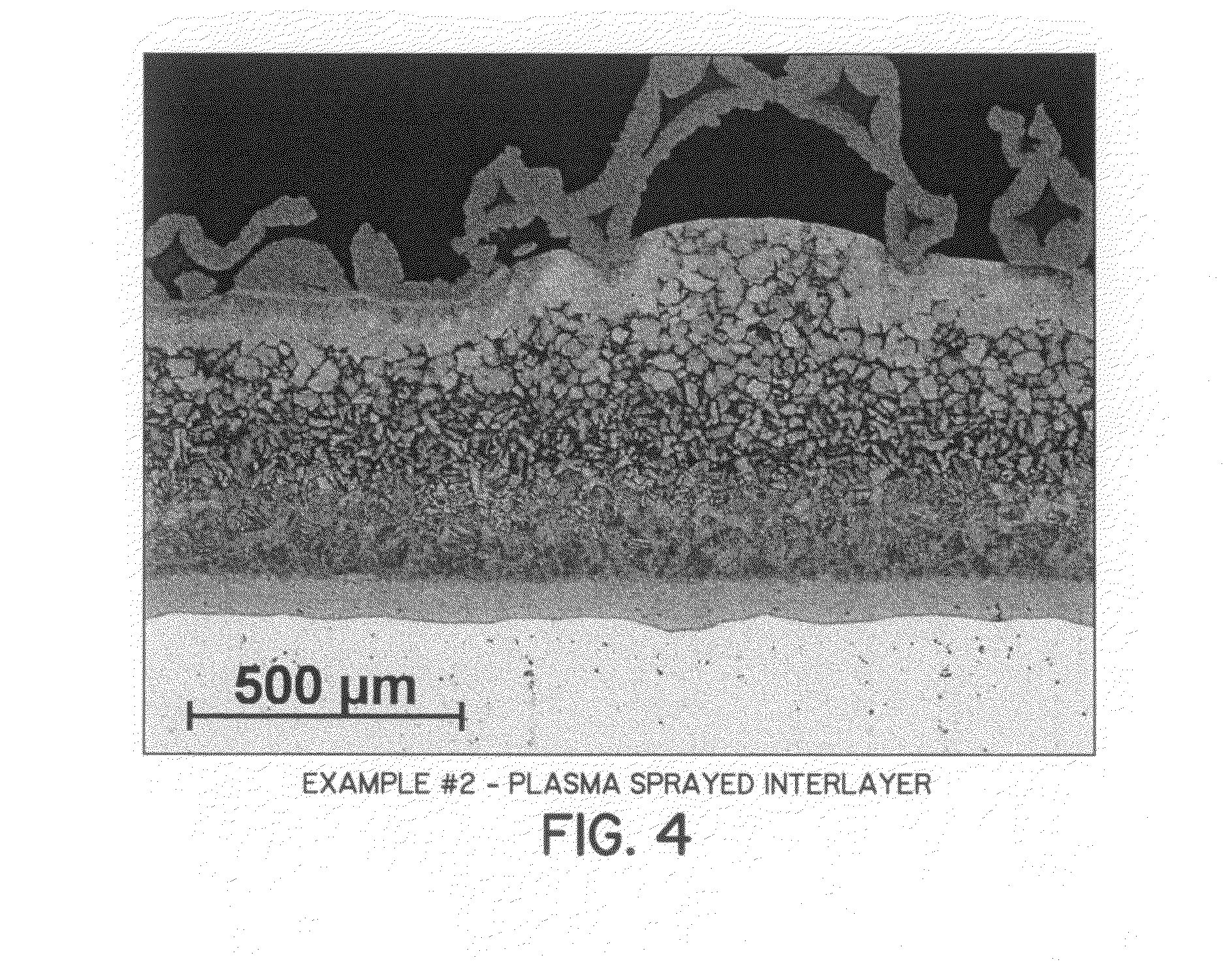Method for bonding a tantalum structure to a cobalt-alloy substrate
a technology of cobalt alloy and tantalum structure, which is applied in the field of method for bonding a porous tantalum structure to cobalt or cobalt alloy orthopedic implants, can solve the problems of difficult manufacturing of orthopedic implants with porous structures, difficult bonding of separate components, and difficult bonding of these two metals together
- Summary
- Abstract
- Description
- Claims
- Application Information
AI Technical Summary
Problems solved by technology
Method used
Image
Examples
Embodiment Construction
[0010]In accordance with the present invention and with reference to FIGS. 1 and 2, a method for bonding a porous tantalum structure 10 to a substrate 12 generally begins by constructing an assembly 14 comprising an interlayer 16 placed on the surface of the substrate 12 and the porous tantalum structure 10 placed onto the interlayer 16. It will be appreciated that the assembly 14 may be constructed by placing the individual components 10, 12, 16 together in any order that results in the interlayer 16 positioned between and in contact with the substrate 12, and the porous tantalum structure 10, as shown in FIGS. 1 and 2. In other words, the placement order is not limited to those orders described herein.
[0011]The porous tantalum structure 10 may be TRABECULAR METAL®, available from Zimmer Inc., Warsaw, Ind. The porous tantalum structure 10 is configured to facilitate osseointegration. The porous tantalum structure 10 may have a pore size, pore continuity, and other features for faci...
PUM
| Property | Measurement | Unit |
|---|---|---|
| Temperature | aaaaa | aaaaa |
| Temperature | aaaaa | aaaaa |
| Length | aaaaa | aaaaa |
Abstract
Description
Claims
Application Information
 Login to View More
Login to View More - R&D
- Intellectual Property
- Life Sciences
- Materials
- Tech Scout
- Unparalleled Data Quality
- Higher Quality Content
- 60% Fewer Hallucinations
Browse by: Latest US Patents, China's latest patents, Technical Efficacy Thesaurus, Application Domain, Technology Topic, Popular Technical Reports.
© 2025 PatSnap. All rights reserved.Legal|Privacy policy|Modern Slavery Act Transparency Statement|Sitemap|About US| Contact US: help@patsnap.com



